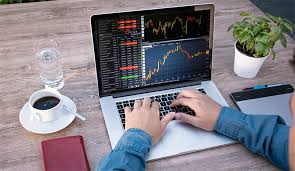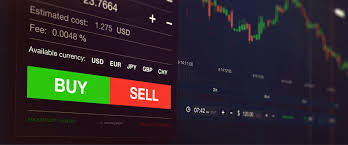
Master the Art of Forex Trading: A Comprehensive Guide
Forex trading, or foreign exchange trading, involves the exchange of one currency for another in the global market. Learning to trade Forex can be both an exciting and challenging endeavor. In this guide, we will explore everything you need to know to get started, including the foundational concepts, strategies, and resources. To assist you in this journey, consider reliable platforms like learn forex trading Trading Broker ZA, which can provide valuable tools and support.
Understanding the Basics of Forex Trading
The Forex market is the largest and most liquid financial market in the world, with trillions of dollars traded daily. Here are some essential terms and concepts:
- Currency Pair: Forex trading involves trading currencies in pairs, like EUR/USD or USD/JPY. The first currency is the base currency, and the second one is the quote currency.
- Pips: A pip stands for «percentage in point.» It is a unit that measures the change in value between two currencies. For most currencies, a pip is 0.0001.
- Leverage: Trading with leverage means you can control a large position with a relatively small amount of capital, amplifying both potential gains and losses.
Choosing a Forex Broker
Selecting the right broker is crucial for your trading success. Here are a few factors to consider:
- Regulation and Reputation: Choose a broker that is regulated by reputable financial authorities. This helps ensure that your funds are safe.
- Trading Platform: A good trading platform should be user-friendly and feature robust analysis tools. Look for platforms that offer demo accounts for practice.
- Customer Support: Responsive customer support can help you resolve issues quickly, which is vital in the fast-paced Forex market.
Developing a Trading Strategy
A successful trading strategy is key to long-term profitability. Here are some commonly used strategies:
- Scalping: Involves making numerous trades throughout the day to profit from small price changes.
- Day Trading: Traders open and close positions within the same trading day to capitalize on short-term market movements.
- Swing Trading: This strategy involves taking advantage of price swings in the market over a few days to weeks.
- Position Trading: Involves holding trades for an extended period, typically weeks or months, based on long-term trends.
Risk Management
Effective risk management is essential to protect your trading account and minimize losses. Consider the following strategies:
- Set Stop-Loss Orders: This ensures that your losses are capped if the market moves against you.
- Use Proper Position Sizing: Determine how much of your capital to risk on each trade based on your overall account size.
- Avoid Over-Leveraging: While leverage can increase potential profits, it also magnifies losses. Use it wisely.

Technical Analysis vs. Fundamental Analysis
As a Forex trader, you’ll need to utilize both technical and fundamental analysis:
Technical Analysis
Technical analysis involves studying price charts and using indicators to predict future price movements. Traders analyze patterns, trends, and various technical indicators, such as:
- Moving Averages: Help smooth out price action and identify trends.
- RSI (Relative Strength Index): Measures the speed and change of price movements to identify overbought or oversold conditions.
- MACD (Moving Average Convergence Divergence): A trend-following momentum indicator that helps identify potential buy and sell signals.
Fundamental Analysis
Fundamental analysis examines economic indicators, news events, and overall economic conditions that might influence currency values. Key aspects to watch include:
- Interest Rates: Central banks set benchmark interest rates, which directly influence currency values.
- Inflation Data: Inflation rates can impact purchasing power and monetary policy decisions.
- Economic Reports: Various reports, such as GDP, employment data, and manufacturing indexes, provide insights into economic health.
Utilizing Trading Tools and Resources
To enhance your Forex trading experience, consider utilizing various tools and resources:
- Trading Journals: Keep track of your trades, emotions, and lessons learned to improve your performance over time.
- Forex Calendars: Use calendars to stay informed about upcoming economic events and news releases that could impact the market.
- Community Forums: Join online communities or forums where you can share experiences, strategies, and learn from others.
Continuous Learning and Adaptation
The Forex market is continuously evolving, and successful traders must adapt to changing conditions. Consider these steps to ensure ongoing improvement:
- Stay Informed: Regularly read financial news and analysis to remain updated on market trends.
- Analyze Your Trades: Periodically review your trades and strategies to identify weaknesses and areas for improvement.
- Take Online Courses: Many platforms offer educational resources and courses to enhance your trading knowledge and skills.
Conclusion
Learning Forex trading is a rewarding journey that requires dedication, continuous learning, and practice. By understanding the basics of currency trading, developing a solid strategy, and managing risks effectively, you can navigate the Forex market confidently. Always remember that success in trading comes from experience, so start with a demo account, practice your skills, and remain patient as you develop into a proficient trader. Ultimately, with diligence and the right resources, you can master the art of Forex trading.